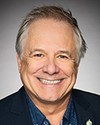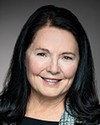Thank you very much, Mr. Chair.
I hear your comments, and I hear the comments of the women veterans because I've lived it. That's the reason I'm so enthusiastic about that inclusion.
The CAF of today is not the CAF I joined in 1987. We've made a lot of progress. There's still a lot of progress to be made, but now we're aware of that progress. We have, again, the gender-based analysis that is mandatory on everything we do, from policy to equipment to infrastructure. There is a fail-safe that we need to address every time we want to do something.
We have GENADs, or gender advisers, in all of our commands, who are there to advise. The chief professional conduct and culture is there too, to provide that expertise.
I don't think, honestly, that women are invisible anymore in the Canadian military. We are part of the CAF, the same as the different employment equity groups. We are taking our place, and we are being supported.
Is it perfect? No. Do we have improvements to make? Absolutely, but our voice is being heard. We have the defence advisory organizations. When we look at indigenous peoples, visible minorities, LGBTQ and women, we meet regularly at the tactical level. On each of the bases there's a level across Canada where we hear them and we hear about the gaps, what they want us to change and, as much as we can, given resources, priorities, sequencing and everything, we try to deliver on what they need.
I think we're here to hear and to change. That's the big difference that I would note from 35 years ago when I joined.




